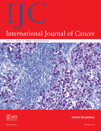Randomized healthservices study of human papillomavirus-based management of low-grade cytological abnormalities†
The study was primarily designed by the principal investigators (Drs. L. Dillner, J. Dillner and Törnberg), with input from all authors. Dr. Kemetli maintained the database and analysed the data under supervision of Dr. Törnberg. Drs. Elfgren, S. Andersson, Persson and Rylander were responsible for the clinical management of the patients. Drs. Bogdanovic and P. Andersson performed the HPV testing, under the supervision of Dr. Grillner. Ms. Carlsten-Thor assisted with study coordination. Drs. L. Dillner and J. Dillner primarily drafted the manuscript, to which all authors contributed. Dr L. Dillner, as the corresponding author, had full access to all the data in the study and had final responsibility for the decision to submit the manuscript for publication. The final version of the manuscript was seen and approved by all authors.
Abstract
Human papillomavirus (HPV)-based management of women with borderline atypical squamous cells of undetermined significance (ASCUS) or mildly abnormal cervical intraepithelial neoplasia (CINI) cervical cytology has been extensively studied in the research setting. We wished to assess safety and health care resource use of a real-life health care policy using HPV triaging. All 15 outpatient clinics involved in the organized population-based screening program in Stockholm, Sweden screening program were randomized to either continue with prior policy (colposcopy of all women with ASCUS/CINI) or to implement a policy with HPV triaging and colposcopy only of HPV-positive women. The trial enrolled the 3,319 women who were diagnosed with ASCUS (n = 1,335) or CINI (n = 1,984) in Stockholm during 17th March 2003 to 16th January 2006. Detection of high-grade cervical lesions (CINII+) and health care cost consumption was studied by registry linkages. The proportion of histopathology-verified CINII+ was similar for the two policies (395 of 1,752 women (22.5%; 95% Confidence interval [CI]: 20.6–24.6%) had CINII+ diagnosed with HPV triaging policy, 318 of 1,567 women (20.3%; 95%CI: 18.3–22.4%) had CINII+ with colposcopy policy). Sixty-four percent of women with ASCUS and 77% of women with CINI were HPV positive. HPV-positivity was age-dependent, with 81% of women below 35 years of age and 44% of women above 45 years of age testing HPV-positive. HPV triaging was cost-effective only above 35 years of age. In conclusion, a real-life randomized healthservices study of HPV triaging of women with ASCUS/CINI demonstrated similar detection of CINII+ as colposcopy of all women.




